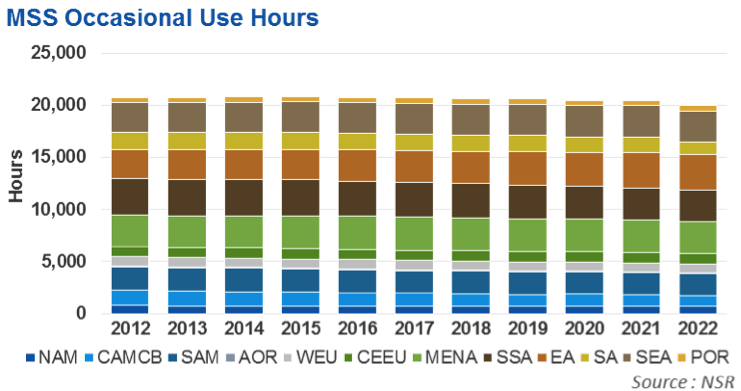|
|
MSS SNG – A Steady Opportunity amidst a Changing Market
Feb 12th, 2014 by
Brad Grady, NSR
A recent study of American news programming by the Pew
Charitable Trust found that on the three large 24/7 U.S. cable
news networks (Fox News, CNN, and MSNBC) 2007 – 2012 saw a
steady decline in the overall amount of ‘live event’ coverage
for daytime TV. Instead, packaged content such as footage
recorded from a remote crew transmitted back to the news room
saw a steady increase. Meanwhile, amateur footage from
YouTube captured on mobile phones with grainy, shaky video have
come to symbolize truly ‘breaking news.’ Similarly, webcam
based interviews have become almost commonplace for news
programming. This all begs a key question for MSS-based
SNG applications…. If mobile phone video capture is
acceptable, does that limit the market for the higher quality
delivered from an MSS terminal?
For markets with robust terrestrial infrastructure (including
access at a remote reporter’s hotel room for a webcam
interview), there might not be a need to burn MSS airtime.
With less ‘live at the scene’ footage, more crowd-sourced
footage, and better terrestrial infrastructure,
MSS-centric SNG could have tough times ahead… or do they?
According to NSR’s latest study on SNG markets, Contribution
and Occasional Use TV Markets, MSS SNG/OU hourly uptake
will decline only slightly on a global basis for the foreseeable
future. At the same time, there is a slight
uptick in the number of In-service units.
Just as terrestrial services have impacted the larger VSAT-based
SNG market in terms of utilization, cellular access has
impacted the per-unit utilization of MSS SNG services.

Additionally, emerging regional news programming continues to
increase the number of media outlets, crews, and reporters.
With more demand for content from more places, there
continues to be demand for high quality footage from breaking
news events. These are locations where
terrestrial infrastructure is either non-existent, or not
practical. Mobile coverage of disasters
continues to be a heavy-consumer of MSS SNG airtime, as well as
forward-deployed reporters in hostile environments for the
developed media markets.
In emerging markets, having an on air personality at major
regional events can be a significant differentiator in a highly
competitive, rapidly developing market. Looking forward,
as consumers continue to demand more bandwidth to their personal
mobile devices, it is easy to imagine a scenario in a highly
dense or bandwidth-constrained location where terrestrial
wireless streaming is simply not an option for news crews –
where MSS SNGs are the only option for a small, highly mobile
production crew. Even leading cellular based news
broadcast equipment still typically can easily interface with
MSS SNG terminals, further support for the MSS SNG sector.
Bottom Line
MSS SNGs continue to be a part of the ‘go-bag’ for breaking
news crews, and will continue to see steady yearly in-service
unit figures. Largely immune from even-odd year trends
found in the VSAT-based SNG/OU markets, MSS SNG services
will continue to be a steady corner of the SNG market –
not posting significant global growth, but not seeing the peaks
and valleys found in the VSAT SNG/OU market. Bottom line,
the MSS SNG market will continue to ride-out the changes in news
programming, content acquisition, and video quality.
|
|
 |